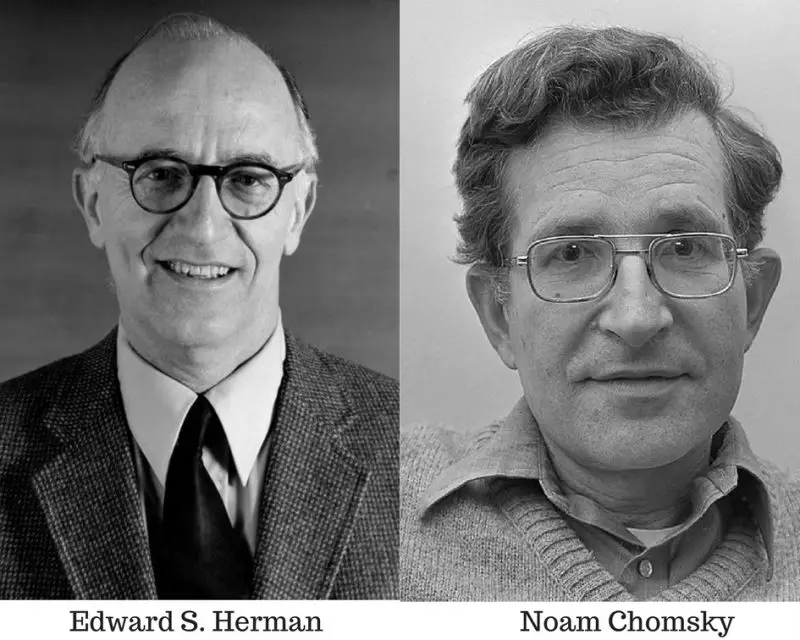What is manufacturing consent and the propaganda model?
Manufacturing Consent┬Āby Noam Chomsky and Edward S. Herman explains how mass media in democracies often supports powerful elites instead of serving the public. It introduces the “propaganda model,” which shows how the media shapes news to reflect the interests of governments and corporations.
The model identifies five key filters that influence what we see and hear in the media:┬Āownership,┬Āadvertising,┬Ānews sources,┬Ācriticism (flak), and┬Ādominant ideologies. Media companies, owned by big corporations, focus on profits and avoid stories that could harm their business or upset advertisers. They rely heavily on government and corporate sources for information, which limits diverse viewpoints. If media challenges powerful interests, it often faces backlash, called “flak.” Additionally, prevailing ideologies, like the “war on terror,” shape media narratives to align with elite priorities.
This system doesn’t need direct censorshipŌĆöit works through economic and institutional pressures. The result is a media landscape that allows limited debate, often reinforcing the status quo while appearing neutral or balanced.
Chomsky and Herman argue that these patterns make the media a subtle tool for controlling public opinion. Despite being written decades ago, the book remains relevant, especially in the digital age where algorithms and tech giants further shape the flow of information.┬ĀManufacturing Consent┬Āhelps readers critically evaluate the media’s role in society and its impact on democracy.
Hegemony is when one group controls others by making their ideas seem normal or the right way to think and act. This makes their views dominant, while other ideas or different ways of doing things are less likely to be heard or accepted.

The 5 Propaganda model filters:
Ownership- profit orientation of the media, independent and small media are eliminated, it tends towards the media monopoly.
Advertising- Market driven orientation of media, advertisement is the main form of revenue for the media, media is more interested in attracting audiences with buying power.
Sourcing- Official sources dominate the media, official sources promote the status quo and specific political views, media has become dependent on official information.
Flak- Policing the media, negative response to media content. Form of pressure mechanism to a specific media outlet, journalist or editor, Flak is instigated by the government.
Anti-Communism-Constructed within the logic of the Cold War, It Looks at the idea of anti-communism as a ŌĆśdogmaŌĆÖ in the USA and its allies. Free-market capitalism is implicitly regarded by Western media as superior to communism.
Bibliography:
A Propaganda Model, https://chomsky.info/consent01/


The way you explanied the concept of Manufacturing Consent and The Propaganda Model is easy to understand, as it can be a complicated theory to get to know in my opinion, so good job on that! However, I would have added an example to expand further on the topic. Overall, well done, keep it up!
I like the simplicity of the key information shown on what is Manufacturing consent and how the propaganda model operates in a capitalist environment. An example would’ve been nice since there are quite a few out there to choose from and you could’ve explained how your example relates to these theories.